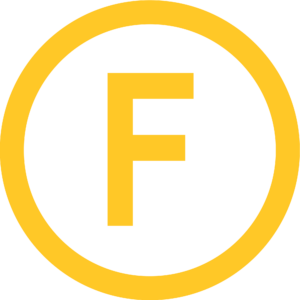Are you an engineer dreaming of working in the United States? The USA offers incredible opportunities for skilled professionals in fields like software, mechanical, and electrical engineering, but securing a job with visa sponsorship can feel daunting. Don’t worry—this guide will walk you through the steps to find and land engineering jobs with visa sponsorship, from job search strategies to visa applications. With determination and the right approach, you can build a rewarding career in the USA!
Why the USA Needs International Engineers
The USA is a global hub for innovation, with industries like technology, automotive, and aerospace driving demand for engineers. However, a shortage of local talent in STEM fields has led employers to seek international professionals. According to the U.S. Bureau of Labor Statistics, employment in engineering occupations is projected to grow 7% from 2020 to 2030, adding about 146,000 new jobs. Many of these roles, especially in software and mechanical engineering, offer visa sponsorship to attract global talent.
Visa sponsorship, particularly through the H-1B visa, allows U.S. employers to hire foreign workers for specialty occupations. This makes engineering a prime field for international candidates ready to bring their skills to the USA.
Key Statistics on Engineering Jobs and Visa Sponsorship
- 1,512 engineering jobs with visa sponsorship were listed on Indeed.com in October 2024.
- The median annual salary for software engineers in the USA was $127,260 in 2023, with top earners exceeding $200,000.
- Mechanical engineers earned a median salary of $99,510 in 2023, with visa sponsorship common in automotive and manufacturing sectors.
- H-1B visas are capped at 85,000 annually, with a lottery system due to high demand.
Step 1: Identify High-Demand Engineering Fields
Not all engineering roles are equally likely to offer visa sponsorship. Focus on high-demand fields where employers are more willing to sponsor:
- Software Engineering: Roles like software developer and data engineer are in high demand, with companies like Google and Amazon offering sponsorship. Salary Range: $80,000–$200,000+.
- Mechanical Engineering: Automotive and manufacturing industries seek mechanical engineers for design and production roles. Salary Range: $70,000–$120,000.
- Electrical Engineering: Power generation and semiconductor industries need electrical engineers, with sponsorship available at firms like Siemens. Salary Range: $75,000–$130,000.
Research companies with a history of sponsoring H-1B visas using platforms like Fulloaded.co.za, which tracks visa sponsorship data.
Step 2: Build a Competitive Profile
To stand out to U.S. employers, tailor your qualifications to their expectations:
- Education: A bachelor’s degree in engineering or a related field is typically required. Advanced degrees (master’s or Ph.D.) boost eligibility, especially for research roles.
- Certifications: U.S.-recognized certifications like Professional Engineer (PE) or Six Sigma enhance credibility.
- Skills: Highlight expertise in tools like AutoCAD, MATLAB, or programming languages like Python and Java.
- Resume: Craft a U.S.-style resume emphasizing projects, technical skills, and measurable achievements. Keep it concise (1–2 pages).
Consider gaining experience with U.S. standards or codes through online courses from Coursera to align with employer needs.
Step 3: Tips for Standing Out in a Competitive Market
In a highly competitive visa job market like the U.S., standing out isn’t just about having a degree or experience—it’s about how you package and present your value. Here are a few quick tips to boost your visibility:
1. Build a Personal Brand Online
Create a strong LinkedIn profile showcasing your engineering experience, certifications, and project portfolios. Recruiters often check LinkedIn before shortlisting candidates. Regularly share insights, project updates, or even short posts about engineering trends in your field.
2. Create a Technical Portfolio
Engineers, especially in fields like software or design, benefit from having an online portfolio. Platforms like GitHub (for software engineers) or Behance (for design-focused engineers) let you display real-world projects, code samples, or prototypes that employers can review before they even meet you.
3. Apply Strategically
Instead of applying to every job, focus on roles where your skills directly align. Tailor your resume and cover letter for each position, and keep track of employers with a consistent history of hiring international talent.
4. Leverage Internships or Fellowships
Programs like the EPI Internship or research-based fellowships are great foot-in-the-door opportunities. Even unpaid or part-time roles in the U.S. can later convert into full-time sponsored positions if you demonstrate exceptional value.
5. Be Persistent, Not Passive
Follow up after interviews, send thank-you notes, and connect with interviewers on LinkedIn. A simple follow-up email can often nudge a recruiter to give your profile a second look.
Step 4: Search for Visa-Sponsoring Jobs
Finding jobs that offer visa sponsorship requires targeted strategies:
- Job Boards: Use Indeed, LinkedIn, and Glassdoor with filters for “visa sponsorship” or “H-1B.”
- Specialized Platforms: Websites like USponsorMe and VisaSponsor.Jobs focus on visa-sponsored roles.
- Company Websites: Large firms like Ford, Intel, and Honeywell often sponsor visas. Check their career pages directly.
- Startups: Platforms like Wellfound list startup jobs with sponsorship filters.
Networking is key. Attend virtual industry events or join ASME to connect with U.S. employers.
Step 5: Ace the Application and Interview
Once you find a job, make your application stand out:
- Cover Letter: Mention your need for visa sponsorship upfront and highlight why you’re a perfect fit.
- Interview Prep: Practice common questions like “Describe a challenging project” or “How do you approach problem-solving?” Research the company thoroughly.
- Technical Skills: Be ready to demonstrate expertise through coding tests (for software roles) or design discussions (for mechanical/electrical roles).
Small companies may sponsor for Optional Practical Training (OPT) if you’re on an F-1 visa, as it’s less complex than H-1B.
Step 6: Navigate the Visa Process
Securing a job offer is just the start—visa sponsorship requires careful navigation:
- H-1B Visa: The most common visa for engineers, valid for 3 years (extendable to 6). Requires a job offer and a bachelor’s degree.
- Employer’s Role: The employer files the H-1B petition, including a Labor Condition Application (LCA).
- Timing: H-1B applications open in April annually, with a lottery due to the cap. Apply early!
- Legal Help: Consider an immigration attorney to ensure paperwork is correct.
For Canadian or Mexican engineers, the TN visa under NAFTA is a simpler option, requiring a job offer and degree.
Challenges to Anticipate
The process isn’t without hurdles:
- Competition: The H-1B lottery is highly competitive, with only a 30% approval rate.
- Costs: Employers bear visa filing fees ($1,500–$4,500), but you may need to cover legal or relocation costs. More info.
- Qualifications: Foreign degrees must be evaluated for U.S. equivalency.
Persistence is key. Apply to multiple roles and consider temporary visas like OPT to gain U.S. experience.
Your Path to Success
Landing an engineering job in the USA with visa sponsorship is a challenging but achievable goal. By targeting high-demand fields, building a strong profile, leveraging job boards, and preparing for the visa process, you can turn your dream into reality. The USA offers competitive salaries, cutting-edge projects, and a vibrant professional community. Start your journey today—polish your resume, network with employers, and take the first step toward an exciting career!
Have you applied for U.S. engineering jobs? Share your experiences or questions in the comments below!






